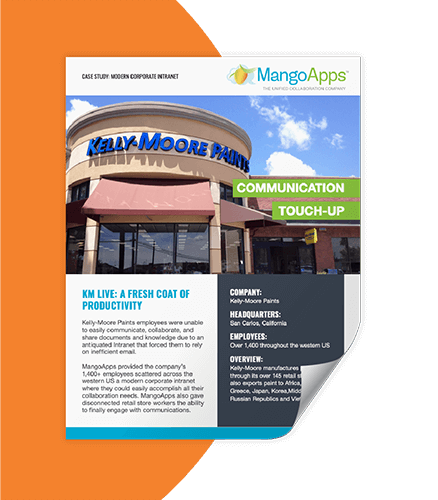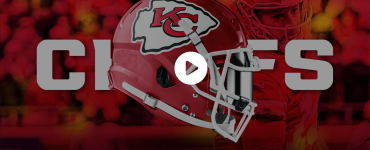The Challenges Of Building A Retail Communication Strategy
Communication strategy is the lifeblood of any successful organization, and in the dynamic world of retail, it’s paramount. However, reaching and engaging retail employees, often dispersed across multiple locations and shifts, can be a formidable task.
In this blog, we’ll explore retail communication strategies and tools (such as a retail employee app) that can help you bridge the gap and connect with your frontline workforce in a meaningful and impactful way.
1) Embrace Mobile Communication Tools
Today, nearly everyone has a smartphone. Utilize this ubiquitous device to your advantage by implementing mobile communication tools. Mobile apps, instant messaging, and SMS notifications can ensure that important messages reach your retail employees wherever they are, facilitating real-time updates, shift scheduling, and critical announcements.
Unlike your outdated intranet, modern employee apps are versatile, user-friendly, and tailored to meet the specific communication needs of today’s retail workforce.
Here’s how this enables your retail communication strategy:
Real-Time Updates
Retail is all about staying agile and responsive. Therefore, modern employee apps enable real-time communication, ensuring that employees receive critical updates, shift changes, and important announcements instantly. This immediacy is invaluable in a fast-moving environment.
Shift Scheduling
Managing shifts efficiently is a constant challenge in retail. Employee apps often feature scheduling modules that allow employees to view and request shifts, making it easier for them to plan their work-life balance.
Critical Announcements
In the event of emergencies, store closures, or policy changes, modern employee apps provide a reliable channel for disseminating important information quickly and efficiently. This ensures that all employees are on the same page and can respond accordingly.
Instant Messaging
Communication apps usually come with instant messaging capabilities, enabling employees to connect with their colleagues and managers seamlessly. This fosters teamwork, facilitates quick problem-solving, and encourages a sense of community among employees.
Access to Resources
Employee apps can serve as a centralized hub for training materials, company policies, and essential resources. Employees can access these resources on the go, enhancing their knowledge and performance.
Recognition and Rewards
These apps often incorporate recognition features where employees can receive and give recognition to their peers for outstanding performance. When retail employees get recognized this way, it helps improve morale and prevent burnout.
Feedback Channels
Many modern employee apps include feedback mechanisms, allowing employees to provide suggestions, report issues, and voice concerns directly to management. Using these channels, you promote transparency and demonstrates that their input is valued. One example is regular employee surveys—see our guide to retail staff survey questions.
In the competitive world of retail, where a well-informed and engaged workforce can make or break customer experiences, modern employee apps have emerged as indispensable tools. They not only streamline communication but also empower employees with the information and resources they need to excel in their roles. By centering these tools in their communication strategy, retail businesses can ensure that their workforce remains connected, informed, and motivated, ultimately driving success and customer satisfaction.
2) Personalization and Relevance
Recognize that one size does not fit all. Tailor your messages to be relevant to specific employee groups or individuals. Whether it’s recognizing outstanding performance, delivering training updates, or sharing company news, personalized messages demonstrate that you value each employee’s unique contribution.
3) Utilize Visual Content
In a busy retail environment, time is of the essence. Visual content, such as infographics, videos, and images, can convey information quickly and effectively. It’s especially useful for conveying complex messages or training materials in a visually appealing format.
4) Leverage Digital Signage
Digital signage can be a powerful tool in any retail communication strategy arsenal, especially for employees on the shop floor. Use digital screens to display important announcements, promotions, safety reminders, and even recognition for outstanding performance. It’s a visual and attention-grabbing way to relay information.
5) Encourage Two-Way Communication
Two-way communication among retail associates is not merely a luxury; it’s an invaluable asset that offers numerous benefits.
Customer expectations can change by the minute in this environment. Empower your employees to engage in two-way communication, and you can get their insights, questions, and feedback and address them promptly.
This open dialogue encourages a culture of continuous improvement, enabling retail businesses to adapt to evolving customer needs swiftly. Moreover, when retail associates feel that their voices are valued, it fosters a sense of ownership and commitment, resulting in higher morale, increased job satisfaction, and, ultimately, superior customer service.
In this way, a two-way retail communication strategy serves as a vital bridge between the frontline employees and management, promoting a more agile, customer-centric, and successful retail operation.
Don’t just broadcast information; encourage feedback and dialogue. Create avenues for retail employees to ask questions, provide suggestions, or voice concerns.
Engaging in a two-way conversation fosters a sense of inclusion and demonstrates that their voices are heard and valued.
6) Invest in Training and Onboarding
Effective communication starts with proper training and onboarding. Equip your retail employees with the skills and tools they need to use your communication platforms effectively. This ensures that the message not only reaches them but is also understood and acted upon.
7) Monitor and Adapt
Keep an eye on communication metrics and gather feedback from employees to assess the effectiveness of your strategies. Be prepared to adapt and refine your communication approach based on these insights. A flexible approach ensures your messages remain relevant and engaging.

Enabling frontline retail employees at Kelly-Moore Paints
Learn how Kelly-Moore Paints enabled its frontline retail workforce with a modern employee app.
Success in Retail Communication Strategy
In conclusion, effective communication with retail employees is the linchpin of success in the fast-paced retail industry.
By embracing mobile tools, personalization, visual content, digital signage, and fostering two-way communication, you can connect with your retail workforce in a way that engages, informs, and empowers them.
In this competitive landscape, the ability to reach and engage retail employees efficiently can make all the difference in delivering exceptional customer experiences and achieving business goals.
MangoApps revolutionizes the retail industry by seamlessly connecting retail associates, fostering collaboration, and enhancing communication on the shop floor. With its intuitive platform and mobile app, MangoApps empowers associates to access real-time updates, communicate instantly, and share critical information, ensuring they are always informed and aligned with business goals.
Through MangoApps, retail associates can effortlessly access training materials, shift schedules, and resources, enabling them to excel in their roles and deliver outstanding customer experiences. Read more about our employee app for retail, or see our customer stories from Superdrug and A.S. Watson.







